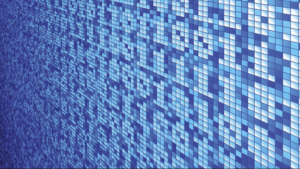Putting It Together: Exponents

Bits and Bytes
| Type of Number |
|
|
|
|
|
|
|
|
Decimal Equivalent |
| Decimal Powers of 2 |
[latex]2^7[/latex] |
[latex]2^6[/latex] |
[latex]2^5[/latex] |
[latex]2^4[/latex] |
[latex]2^3[/latex] |
[latex]2^2[/latex] |
[latex]2^1[/latex] |
[latex]2^0[/latex] |
|
| Decimal Number |
[latex]128[/latex] |
[latex]64[/latex] |
[latex]32[/latex] |
[latex]16[/latex] |
[latex]8[/latex] |
[latex]4[/latex] |
[latex]2[/latex] |
[latex]1[/latex] |
[latex]128+64+32+16+8+4+2+1=255[/latex] |
| Binary Octet |
[latex]0[/latex] |
[latex]0[/latex] |
[latex]0[/latex] |
[latex]0[/latex] |
[latex]0[/latex] |
[latex]0[/latex] |
[latex]0[/latex] |
[latex]1[/latex] |
[latex]1[/latex] |
|
[latex]0[/latex] |
[latex]0[/latex] |
[latex]0[/latex] |
[latex]0[/latex] |
[latex]0[/latex] |
[latex]0[/latex] |
[latex]1[/latex] |
[latex]1[/latex] |
[latex]2+1=3[/latex] |
|
[latex]0[/latex] |
[latex]0[/latex] |
[latex]0[/latex] |
[latex]0[/latex] |
[latex]1[/latex] |
[latex]1[/latex] |
[latex]1[/latex] |
[latex]0[/latex] |
[latex]8+4+2=14[/latex] |
|
[latex]1[/latex] |
[latex]0[/latex] |
[latex]1[/latex] |
[latex]0[/latex] |
[latex]1[/latex] |
[latex]1[/latex] |
[latex]0[/latex] |
[latex]0[/latex] |
[latex]128+32+8+4=172[/latex] |
The [latex]1[/latex]s in the binary octet act as light switches within a computer. The computer uses the binary octets to represent characters such as numbers, letters, and other information. You can think of the number of bits assigned to a computer processor as the amount of "scratch pad" it has available to store calculations and information while it works. Having more "scratch pad" available means the computer can do more without needing to access memory which takes time. There are many more factors that influence the speed and agility of a computer, but the basics can be described with exponents. Now try to imagine how many bytes the Millennium Falcon's computer must have needed to make the Kessel Run in less than [latex]12[/latex] parsecs!
Contribute!
Did you have an idea for improving this content? We’d love your input.
Licenses & Attributions
CC licensed content, Original
 Bits and Bytes
Bits and Bytes